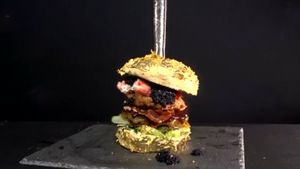JAKARTA - The method of breastfeeding and processing into powder, known as freeze-dryed, has been in the spotlight of recent conversations on social media. This technique, which aims to extend the life of breastfeeding up to three years, raises questions about the safety and quality of nutrition for infants.
The method, also known as the lyophilization technique, was carried out with the aim of extending the life of breast milk storage from 6 months in the freezer to 3 years, citing the savings of breast milk storage space and comfort of mothers who wish to continue to provide breast milk beyond the maternity period. The head of the Indonesian Pediatrician Association (IDAI) breast milking Task Force, DR, dr, Naomi Fauzia Dewanto, Sp.A(K) said the drying process for removing water content, freeze-dering had an impact on the taste and quality of breast milk. Without adequate evidence of research, to date it is not clear whether freeze-dryed ASI has the ratio of protein, fat, carbohydrates that are appropriate as an important source of nutrients needed by the baby, along with active substances for immunity and baby growth and development," said Dr Naomi based on the received press statement, Thursday, May 9. This process includes freezing of breast milk at extreme temperatures of -50 Celsius for 3-5 hours, then converting frozen breast milk into powder milk using a sublimation technique, namely a 2-day water extraction transition directly from solid (ice) to gas (water vapor) without liquid phase. Generally, 1 liter of breast milk will produce about 140 grams of powder milk. The commonly performed breast milk freeze on home practices, has been investigated can lead to a series of physical changes in the main components of breast milk such as the rupture membrane breaking of fat clumps and changes in casein, a decrease in the composition of protein bioactive factors over the length of frozen storage. Freeze-dering method also does not go through a fitting procedure aimed at killing harmful bacteria. In this case, passeurization is deliberately avoided to keep vital probiotics in breast milk. Thus, the risk of contamination remains a threat, in particular, during the reconciliation of water accretion in freeze-dryed milk powder before being consumed by the baby.
SEE ALSO:
Breastfeeding and breast milking for babies may be tiring, and it's understandable that mothers want to find the easiest way to make sure their babies keep getting breast milk. Breastfeeding directly from the mother's breasts is highly recommended so that they can establish close contact between mothers and babies, foster a sense of security and increase parental ties. Breastfeeding is not just giving breast milk," said Dr Naomi. This method is a relatively still very new finding, not yet complete evidence through scientific research so that there are no rules or recommendations for its use by health organizations such as the Center for Disease Control and Prevention of the United States (CDC), AAP, or FDA. The Indonesian Pediatrician Association of Doctors' breast milk Task Force also warns all parties not to be rash in promoting or giving free-dryed breast milk to babies, especially babies with certain medical conditions such as premature or infants who experience immune disorders or chronic diseases.
The English, Chinese, Japanese, Arabic, and French versions are automatically generated by the AI. So there may still be inaccuracies in translating, please always see Indonesian as our main language. (system supported by DigitalSiber.id)


















